Gas Pains
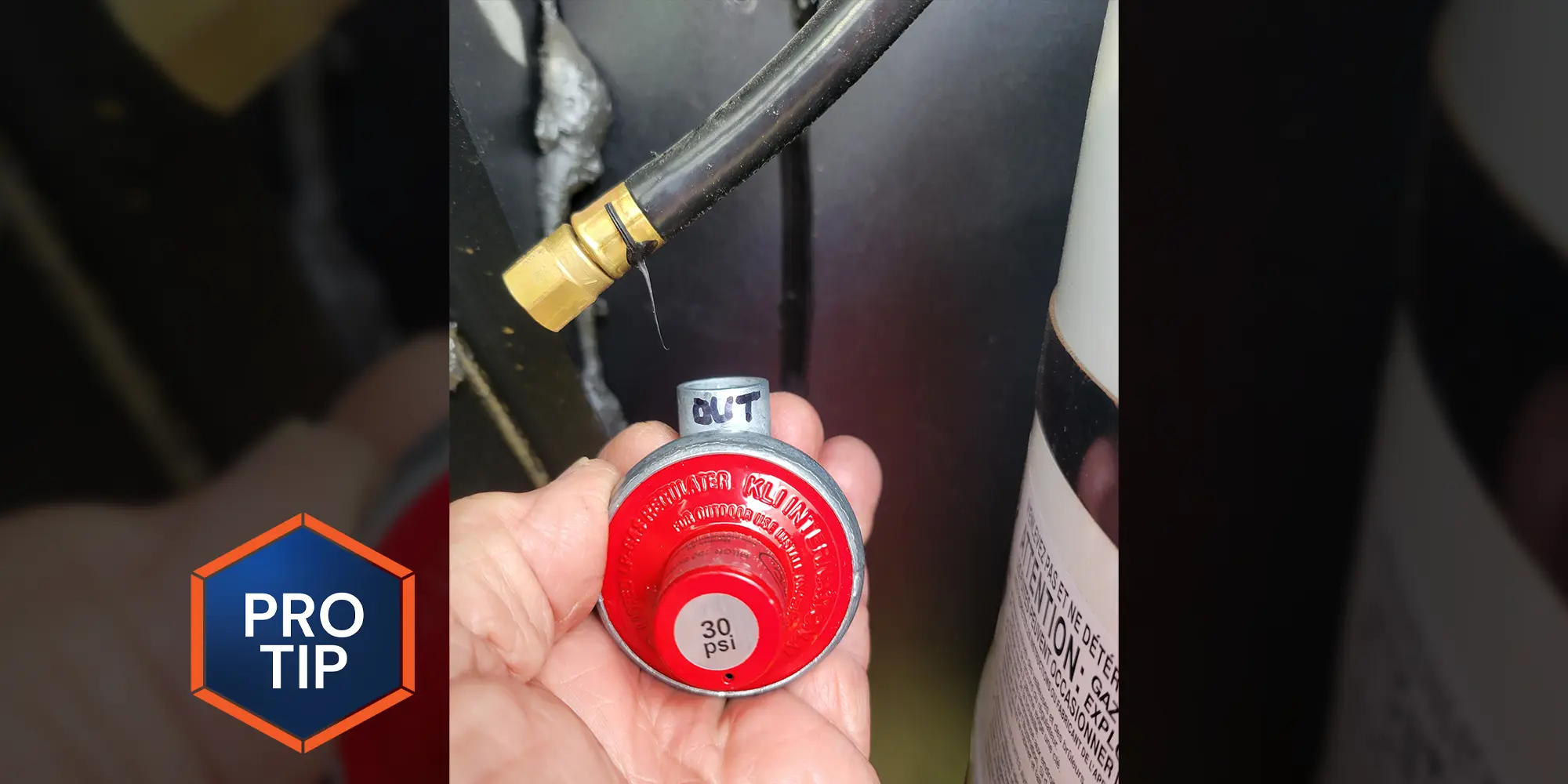
Placing LP-gas cylinders in compartments on opposite sides in a fifth wheel is common practice. While it makes sense, manufacturers had to devise a system to lower the gas pressure that travels across the front of the fifth wheel. For many years, black pipe connected the two cylinders because the pressure was too high for a rubber hose, but it was eventually replaced years ago with a stout, flexible hose protected by a smaller LP-gas regulator, which reduced pressure to 30 psi. The flexible hose alleviated manufacturing problems (routing) created by running the rigid pipe from one side to the other.
On the other hand, mounting LP-gas cylinders on each side of a fifth wheel is convenient, but the reducing regulator — which is mounted on the opposite side of the cylinder connected to the automatic changeover regulator — has a propensity to fail sooner than later.
Unfortunately, many of these secondary regulators supplied by the factory are not very durable and when they fail, the system leaks propane — affecting LP-gas pressure and appliance performance.
While the stock regulators may be somewhat questionable, the fix is relatively simple — as long as you buy the right parts. So, for this fix, where the regulator failed before it was one year old, I opted for the best in the business: A Marshall Excelsior Company brand MEGR 130-30 regulator. It can be purchased at most RV supply stores and on Amazon, which sells it for $25.29.
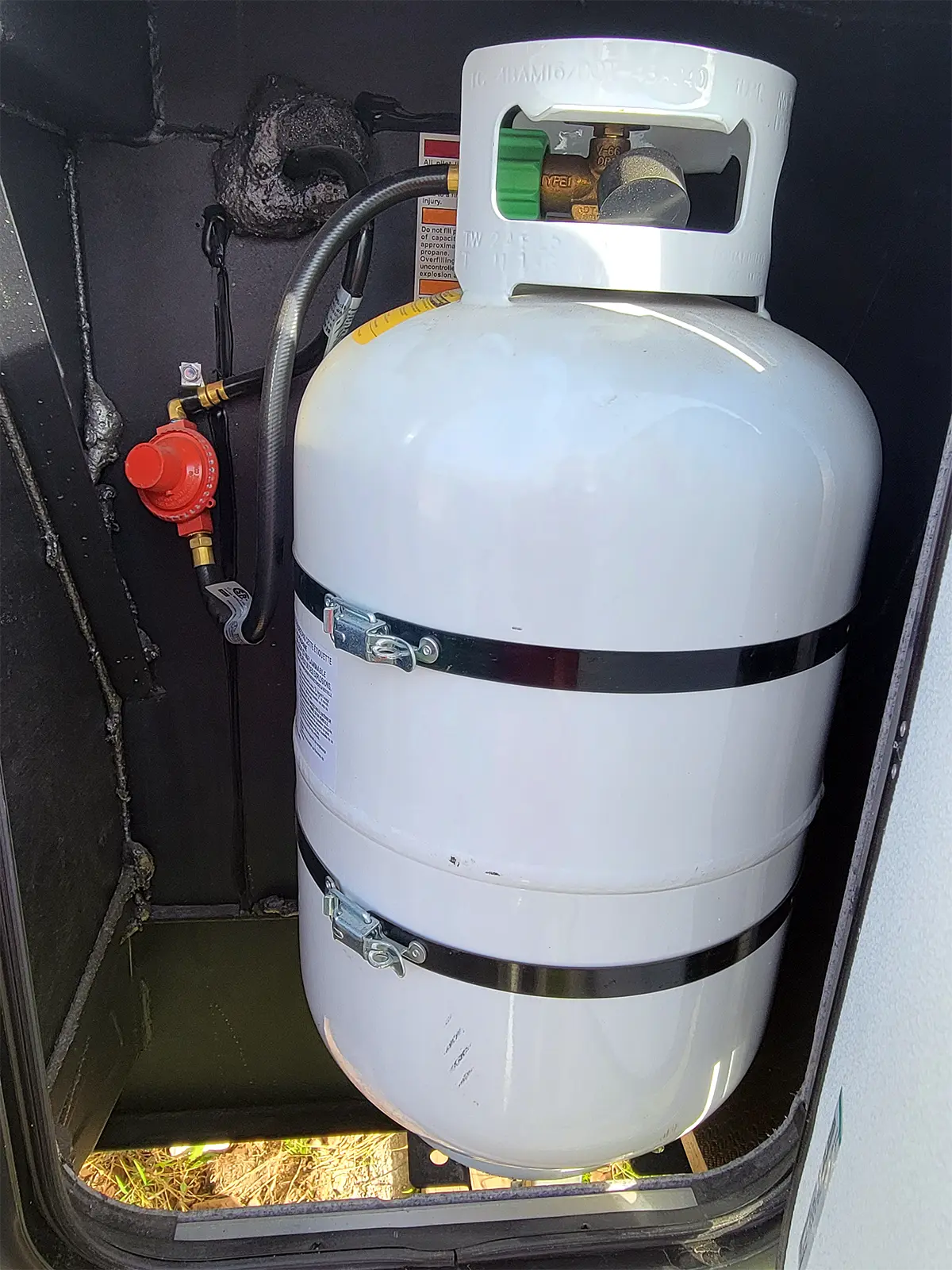
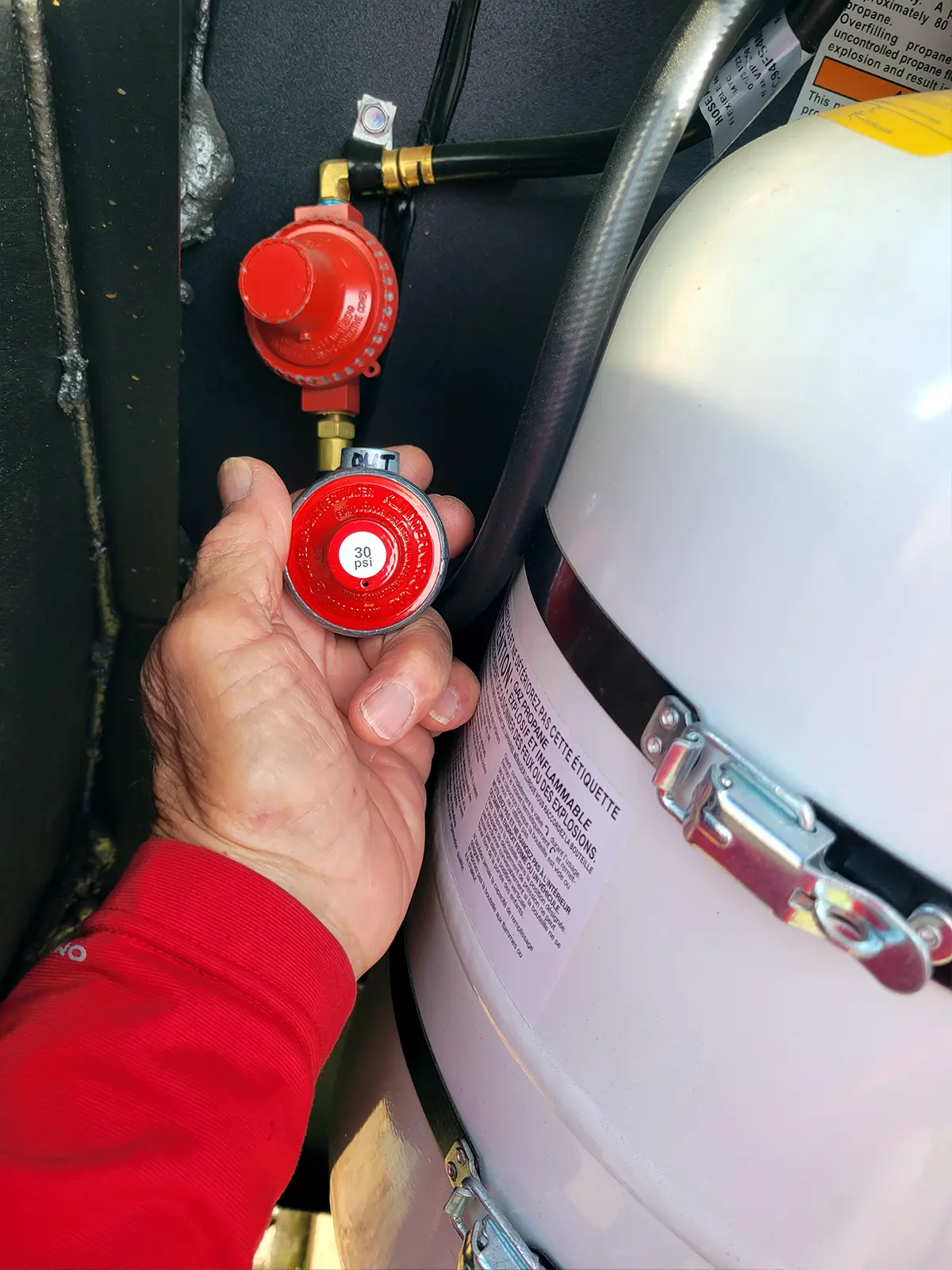
The Marshall Excelsior regulator is a single-stage, fixed pressure regulator that has a die cast zinc body and is UL listed; it has ¼-inch Female National Pipe Threads (FNPT) on both sides to accept the inlet and outlet fittings already connected to the hoses in the fifth wheel. The Marshal Excelsior regulator is much heavier than the original in the fifth wheel and has a higher-quality build than the stock regulator.
As a side note, it’s prudent to replace the secondary regulator after five years, even if it still works — and while you’re at it do the same for the auto changeover regulator on the other side. It’s cheap insurance to keep you on the road, and of course, adds big element of safety to using the LP-gas system.
Start by making sure that both cylinders are turned off and light a stove burner to bleed the gas pressure. Remove the pigtail from the regulator to the propane cylinder and inspect it for excessive brittleness and cracks; if it has seen better days, replace it at the same time. If you need a little bit more room to maneuver inside the compartment, remove the propane cylinder. Remove the clamp that holds the regulator to the wall inside the compartment.
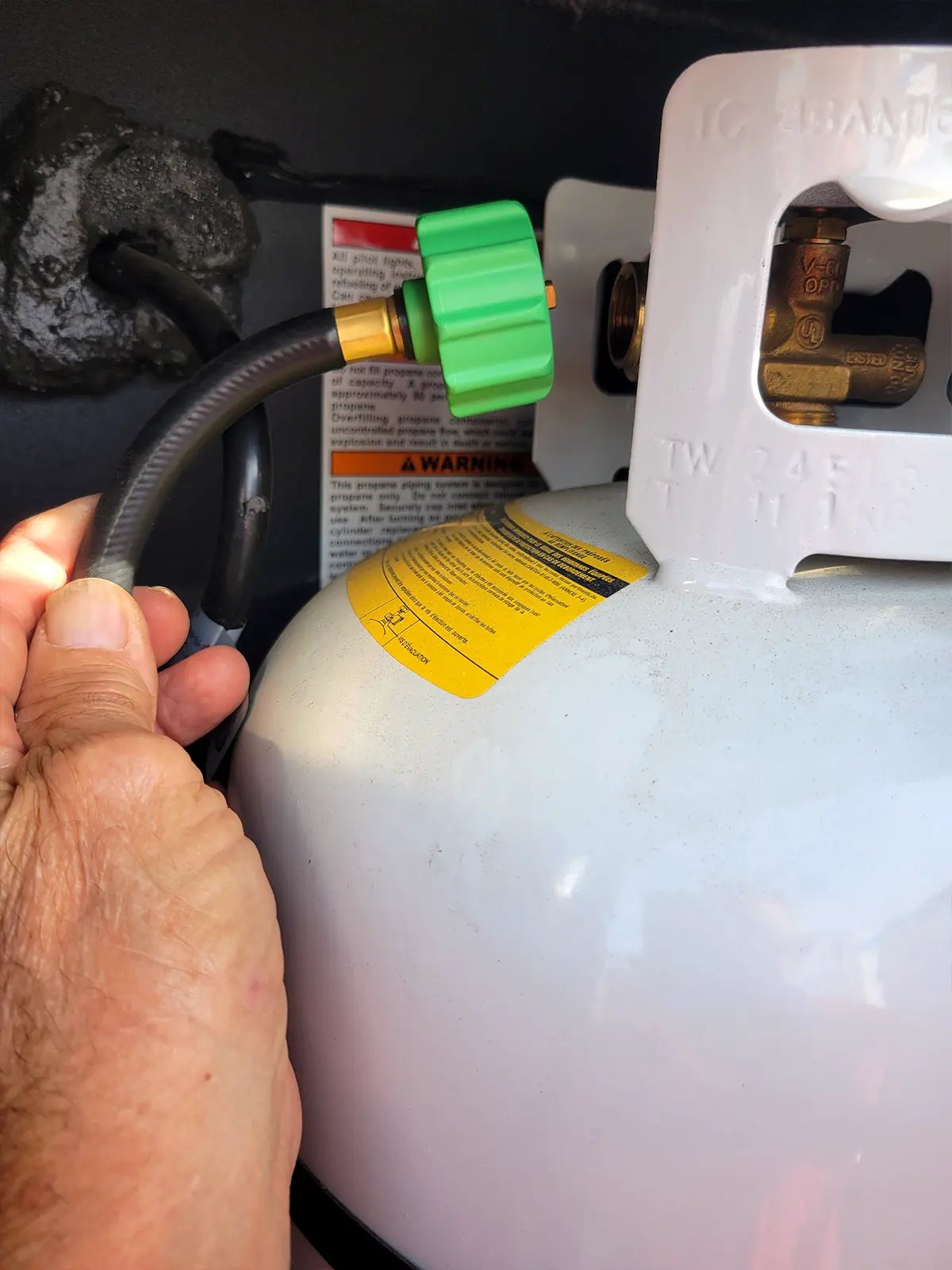
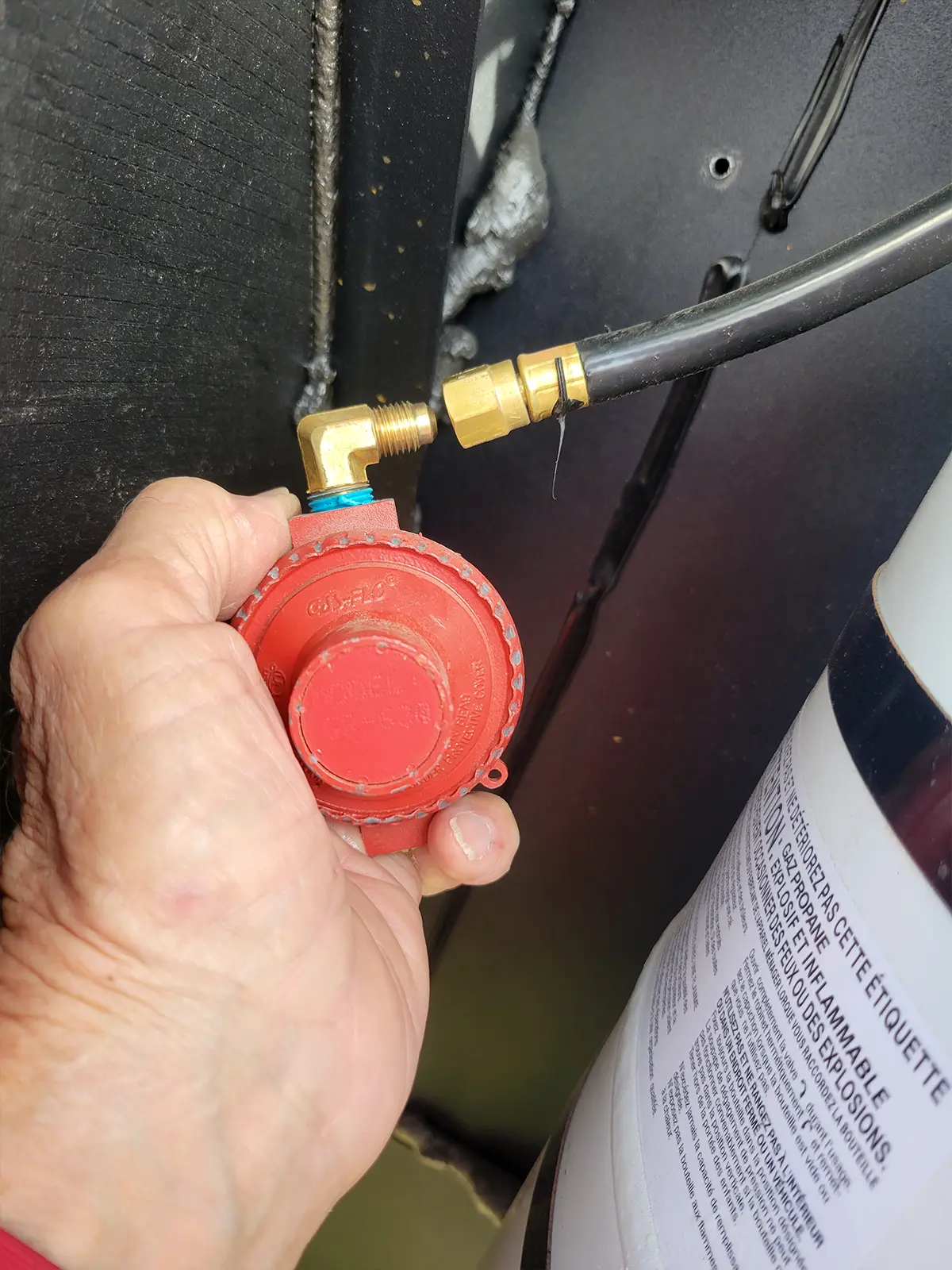
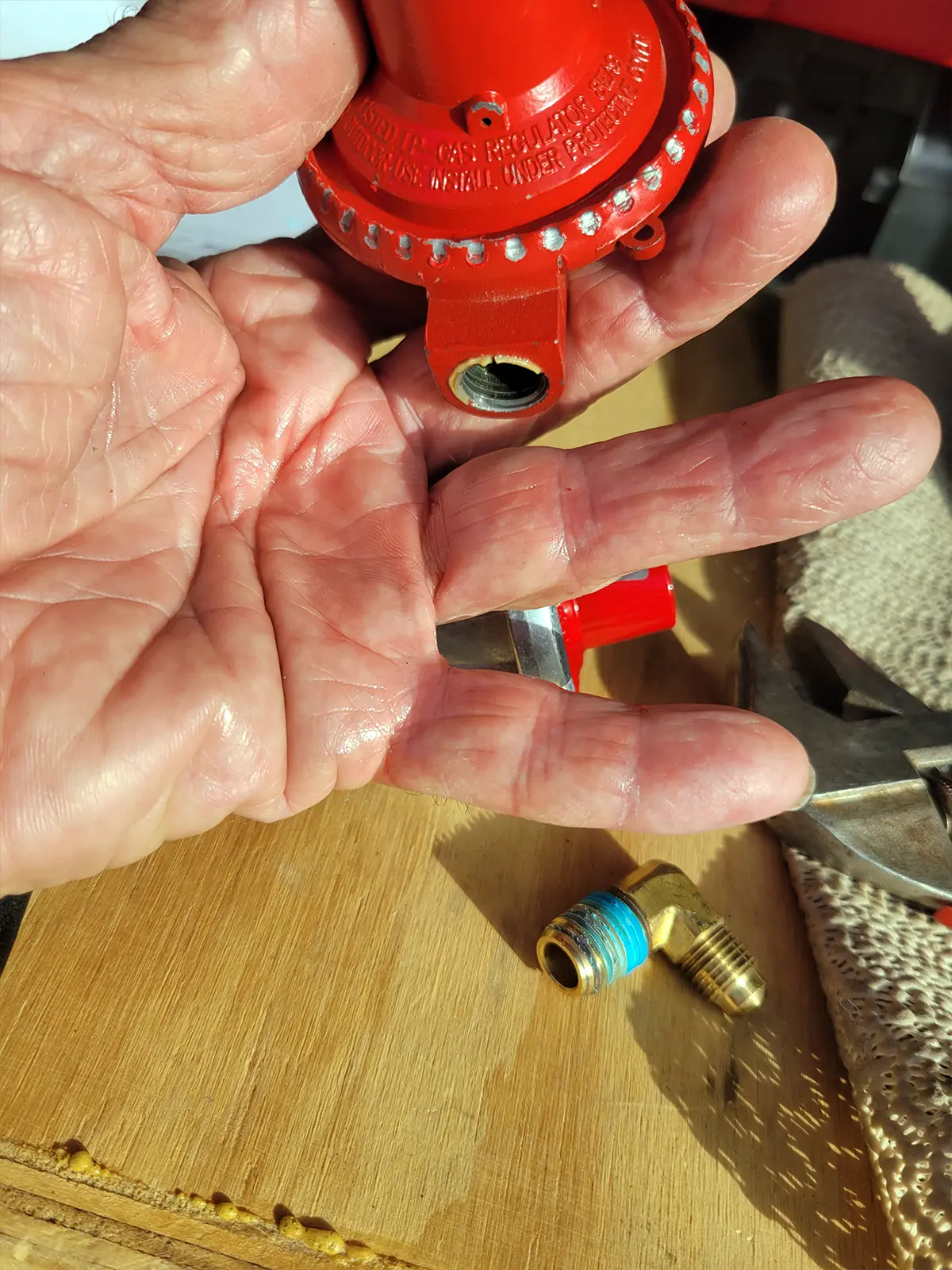



At this point you should have enough flexibility to remove the inlet and outlet fittings and pigtail. Install the fittings into the new regulator, sealing the fitting threads with gas-pipe thread compound or yellow Teflon tape, which is designed for gas. Make sure you install the fittings in the right locations, which are marked (but not very clearly). To make sure, use a felt pen to mark the gas-flow direction.
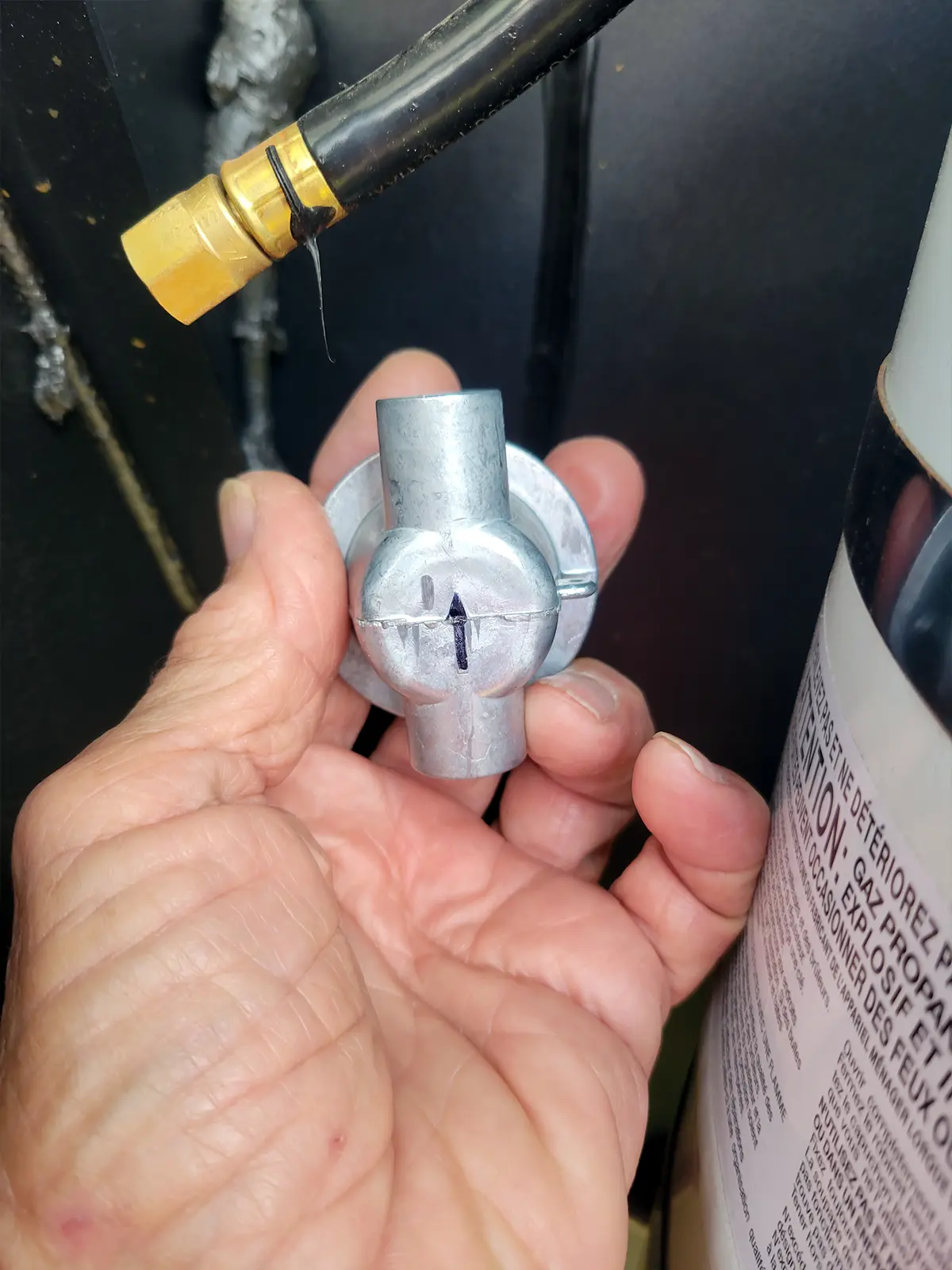
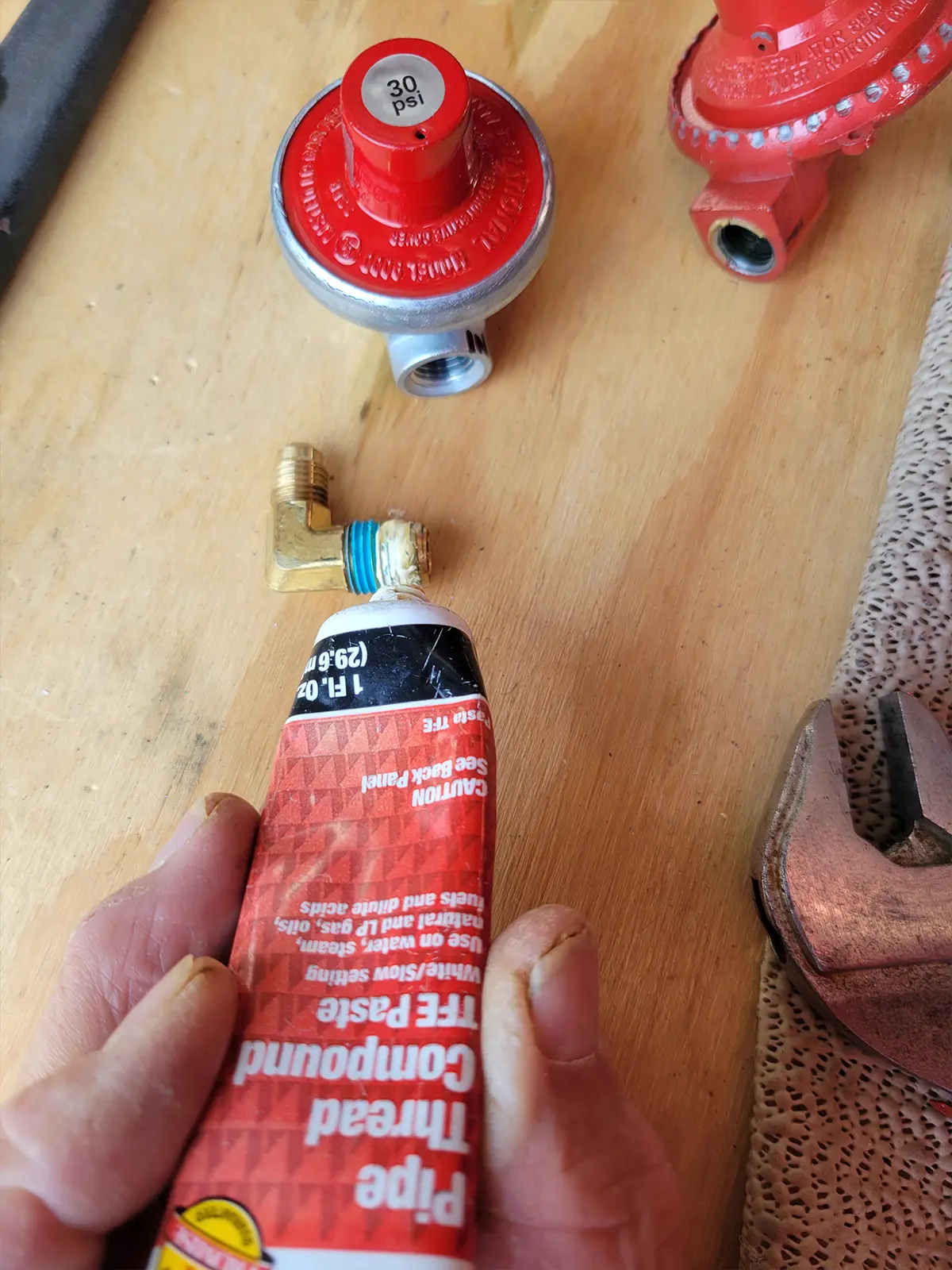
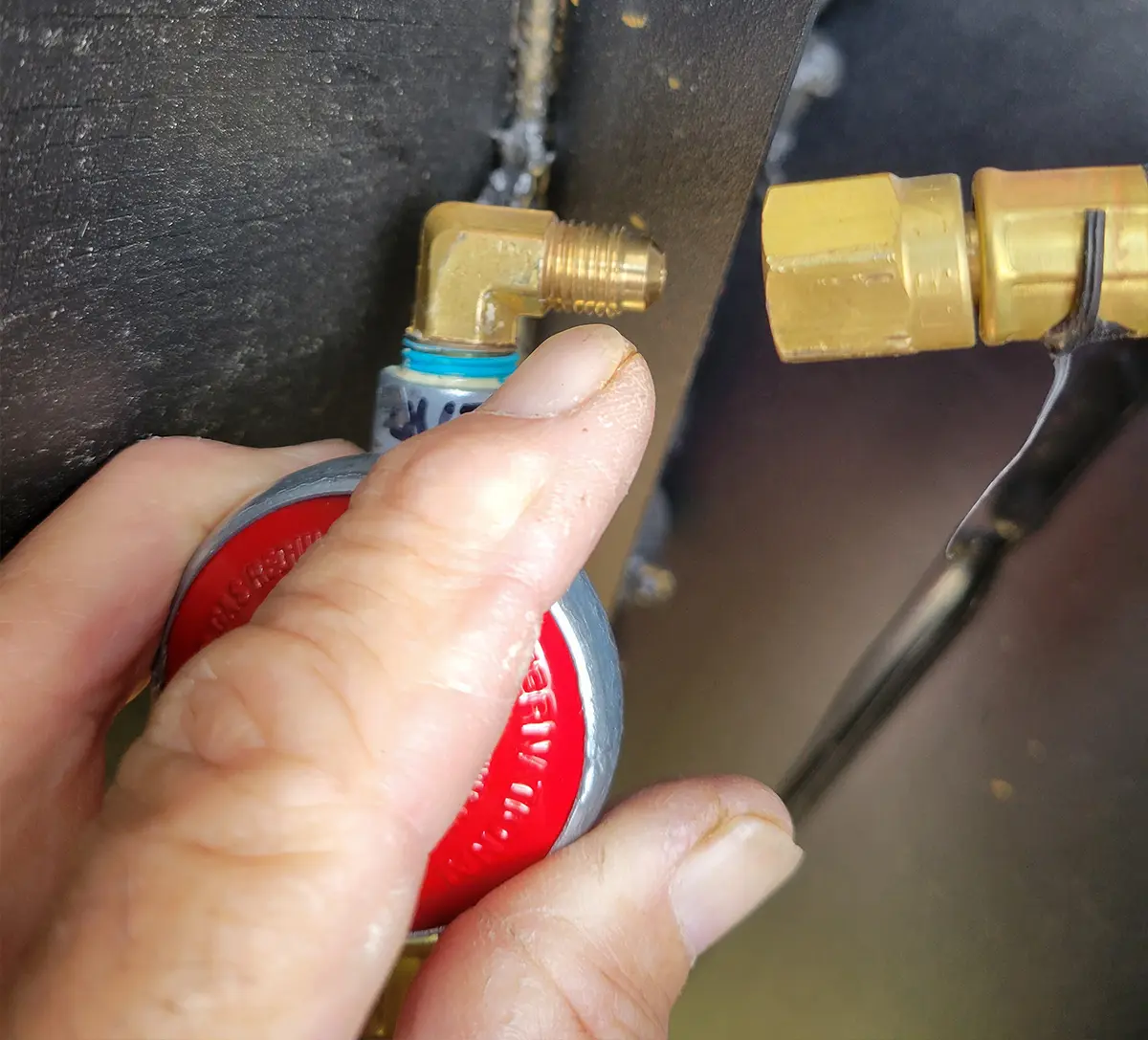
Re-mount the regulator and hook up the pigtail after the cylinder is returned to the compartment. Switch the auto changeover regulator to the cylinder with the secondary regulator and operate the stove until the air is bled out. Be sure to check for leaks using a commercial detection solution. It’s best to have your dealer perform a pressure drop test, which should be done once a year or any time the LP-gas system has been opened.
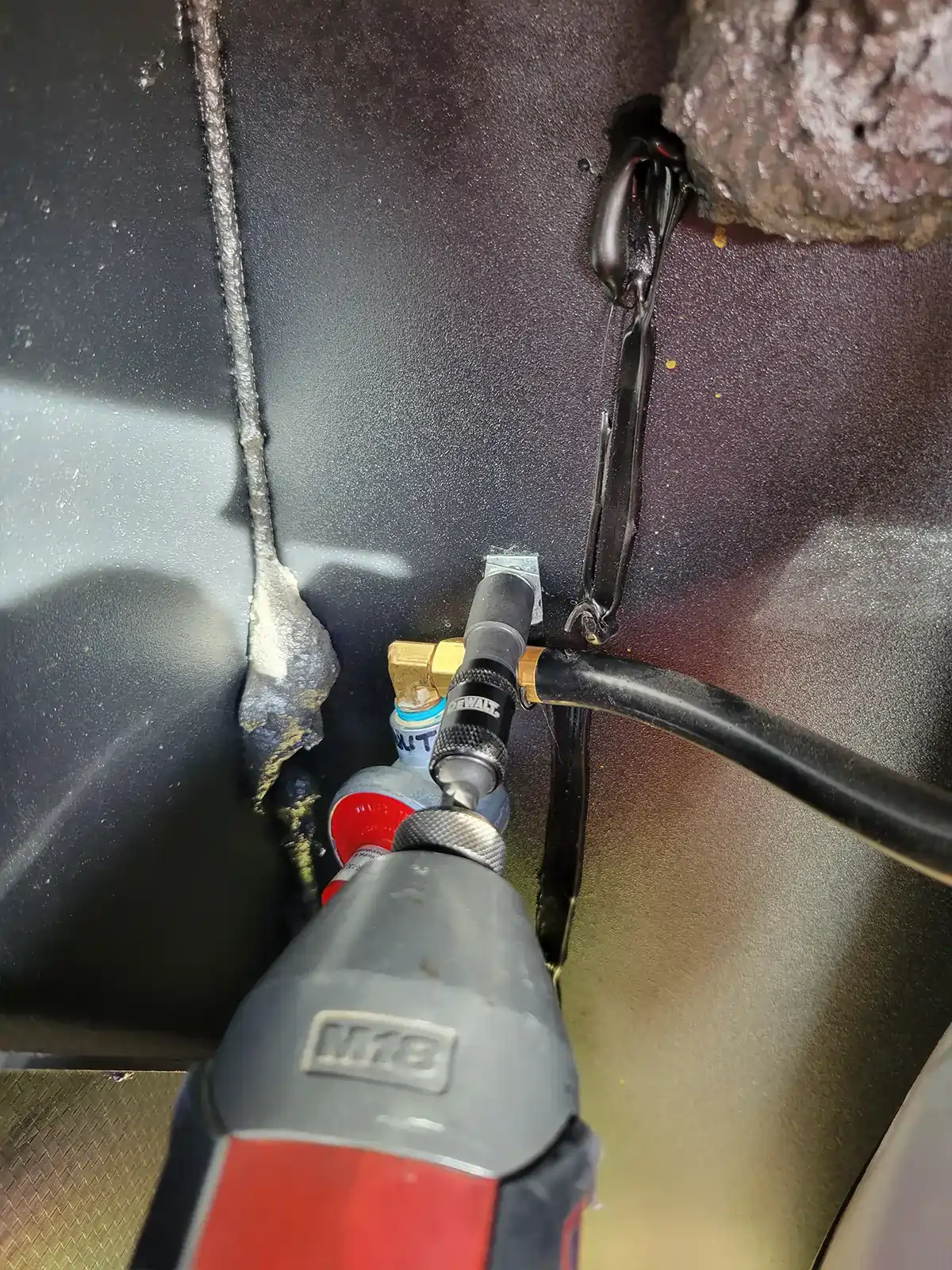
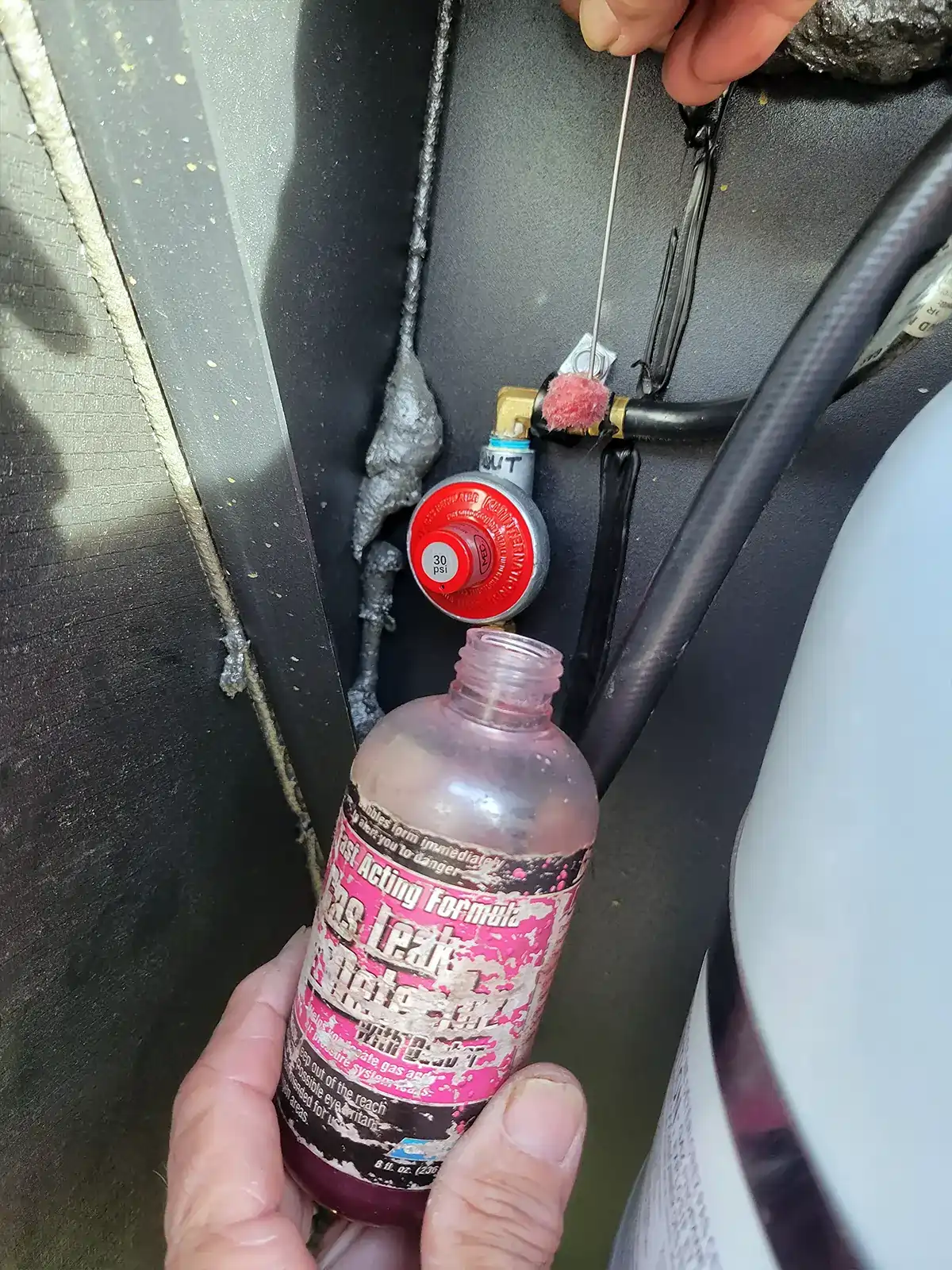
Already a Subscriber? Click here for Access to the Full Issues.


